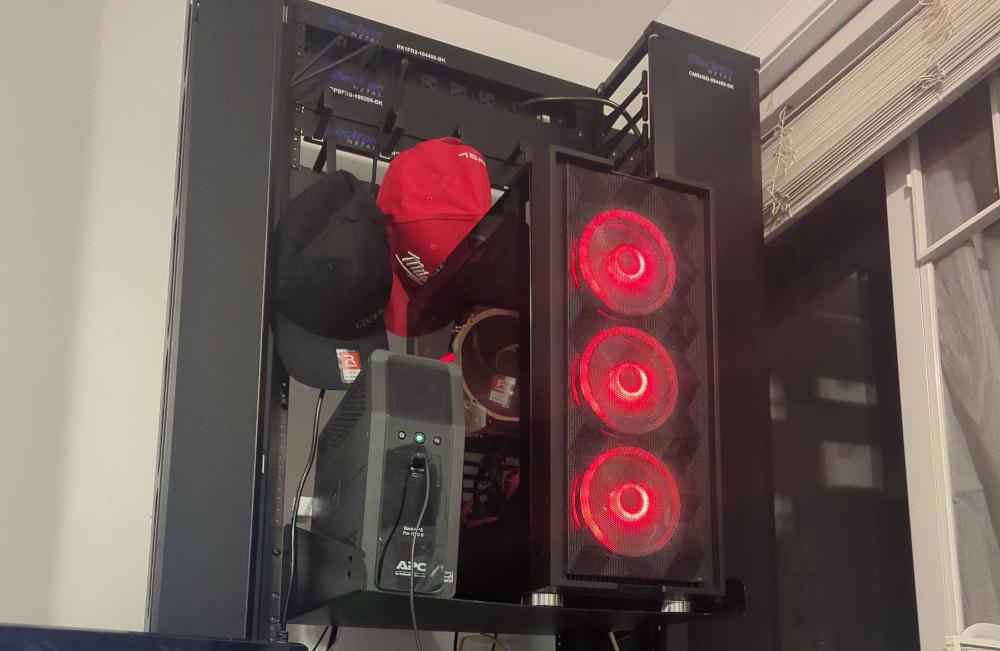The Server
Main Server Overview
Welcome to the TechGarage Main Server! This page provides a comprehensive overview of the primary server infrastructure that powers TechGarage.ca and its associated projects. Whether you’re a tech enthusiast, developer, or part of our community, this detailed breakdown will give you insight into the hardware and software that keeps TechGarage running smoothly.
Server Specifications
The main server, affectionately known as SCServer, is the backbone of our operations. Here’s what powers our services:
- CPU: 12th Gen Intel Core i9-12900K
- Memory: 125.5 GiB of DDR4 RAM
- GPU: NVIDIA GeForce GTX 1080 Ti
-
Storage:
- 1.0 TB NVMe SSD
- 4.0 TB HDD (Primary Storage)
- Operating System: Ubuntu 20.04
Key Software & Services
- Pterodactyl Panel: SCServer runs the main software service via a Pterodactyl panel, which can be accessed through the Techgarage.ca domain. This panel is essential for managing and deploying various services hosted on the server.
- BookStack: The BookStack service runs on our second server, Homeserver2, and serves as the hub for all our documentation, guides, and knowledge resources.
-
Network Configuration: The server is configured with an array of port forwarding rules to ensure all services are always accessible. These include:
- ScrubCraft: Port 25565
- Geyser Connection: Port 19132
- MCMap: Port 8026
- ScrubPlace: Port 6969
Usage & Applications
The SCServer is designed to handle a wide array of tasks and services:
- Hosting: All our web hosting, game servers, and multimedia services run on this robust server.
- Development: It serves as the development environment for ongoing projects, including our Minecraft server clusters, multimedia editing workflows, and other tech ventures.
- Archiving: With ample storage, SCServer also serves as an archive for historical data, backups, and project files.
Future Plans
We continuously upgrade and optimize the SCServer to meet the growing demands of the TechGarage community. Future enhancements may include:
- Increased Storage Capacity: Expanding storage to accommodate more services and data.
- Enhanced Security Measures: Implementing more advanced security protocols to safeguard our operations.
- Service Expansion: Adding new services, such as virtual machines or containerized applications, to broaden our offerings.

